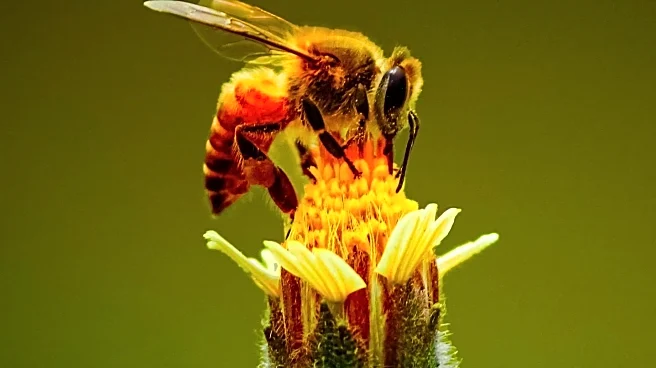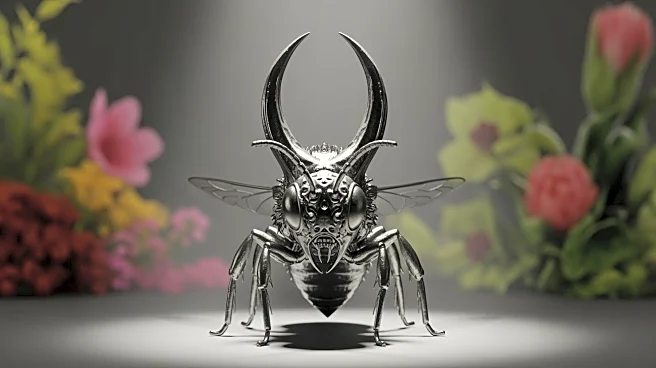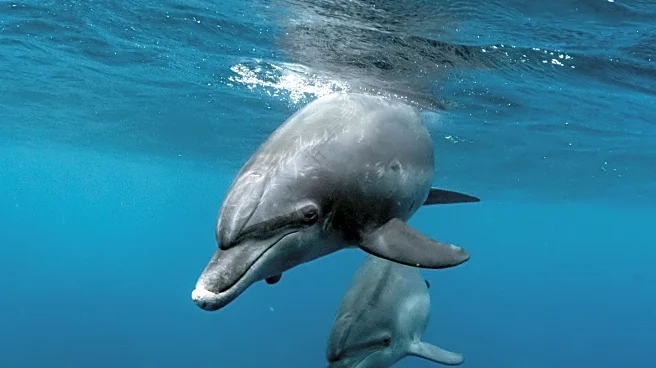What's Happening?
Scientists at Curtin University have discovered a new bee species in Western Australia, named Megachile (Hackeriapis) lucifer due to its devil-like horns. The discovery was made while surveying a critically endangered wildflower. The bee's unique appearance
and DNA barcoding confirmed it as a new species, not matching any known bees in existing databases. The discovery emphasizes the vast number of undiscovered species, particularly in areas threatened by climate change and mining. The research coincides with Australian Pollinator Week, highlighting the importance of bees in maintaining ecosystems.
Why It's Important?
The discovery of the 'Lucifer' bee underscores the importance of biodiversity and the need for conservation efforts to protect endangered species and their habitats. Bees play a crucial role in pollination, supporting plant life and ecosystems. The finding highlights the potential for undiscovered species to exist in threatened areas, emphasizing the need for comprehensive environmental surveys and conservation strategies. The research may prompt increased awareness and action to preserve biodiversity in the face of climate change and industrial activities.
What's Next?
The discovery may lead to further research into the 'Lucifer' bee and its ecological role, potentially influencing conservation policies and practices. Scientists and environmentalists may advocate for more extensive surveys and protection measures for native bees and their habitats. The findings could also inspire public interest and support for biodiversity conservation, encouraging individuals and organizations to contribute to preservation efforts.
Beyond the Headlines
The discovery of the 'Lucifer' bee highlights ethical considerations in environmental conservation, particularly the balance between industrial development and biodiversity preservation. It raises questions about the responsibility of mining companies and other industries to survey and protect native species. The event may also contribute to cultural shifts in how society values and interacts with the natural world, fostering a deeper appreciation for biodiversity and the interconnectedness of ecosystems.














